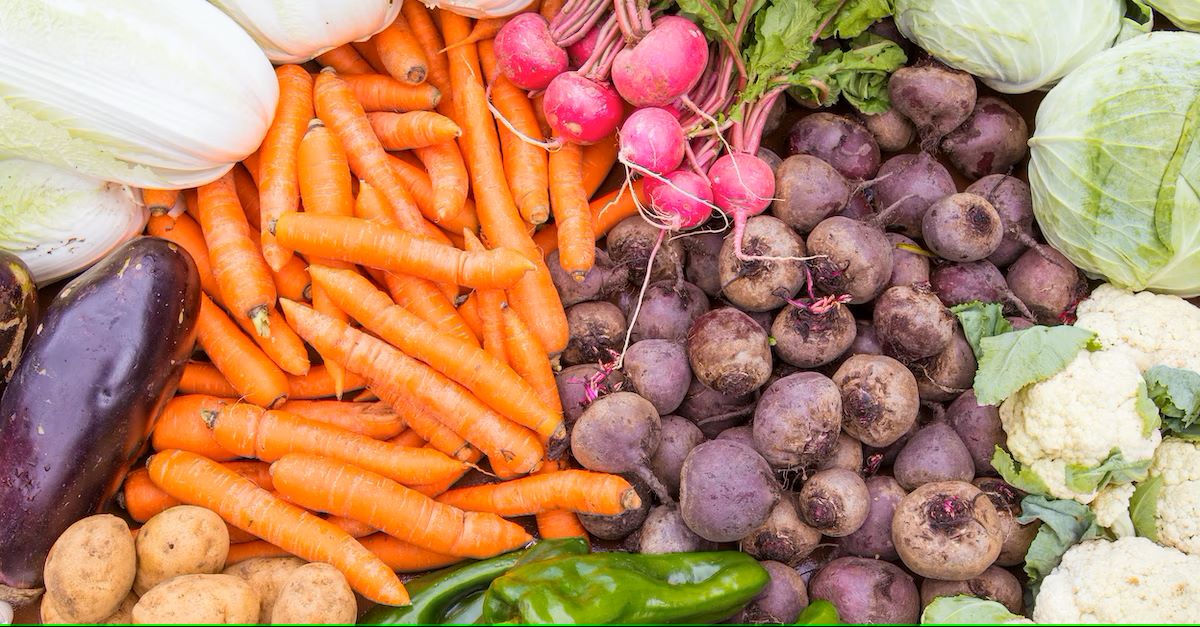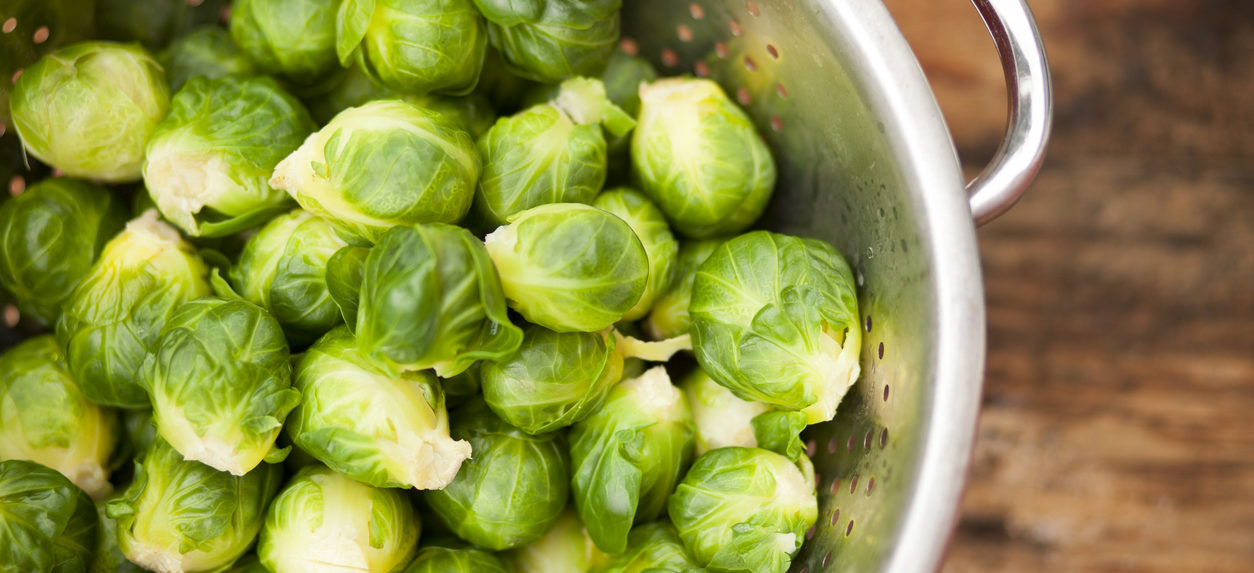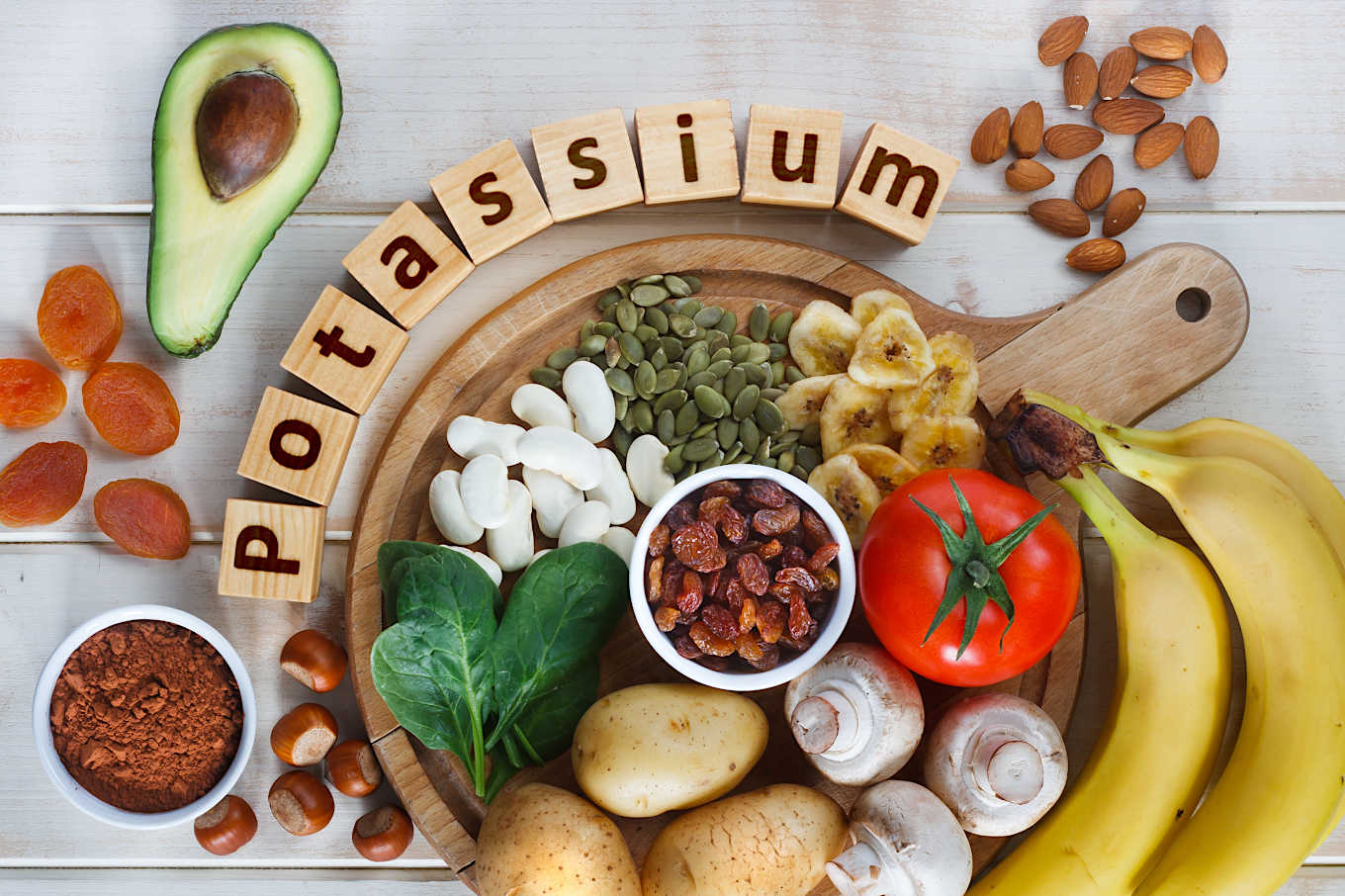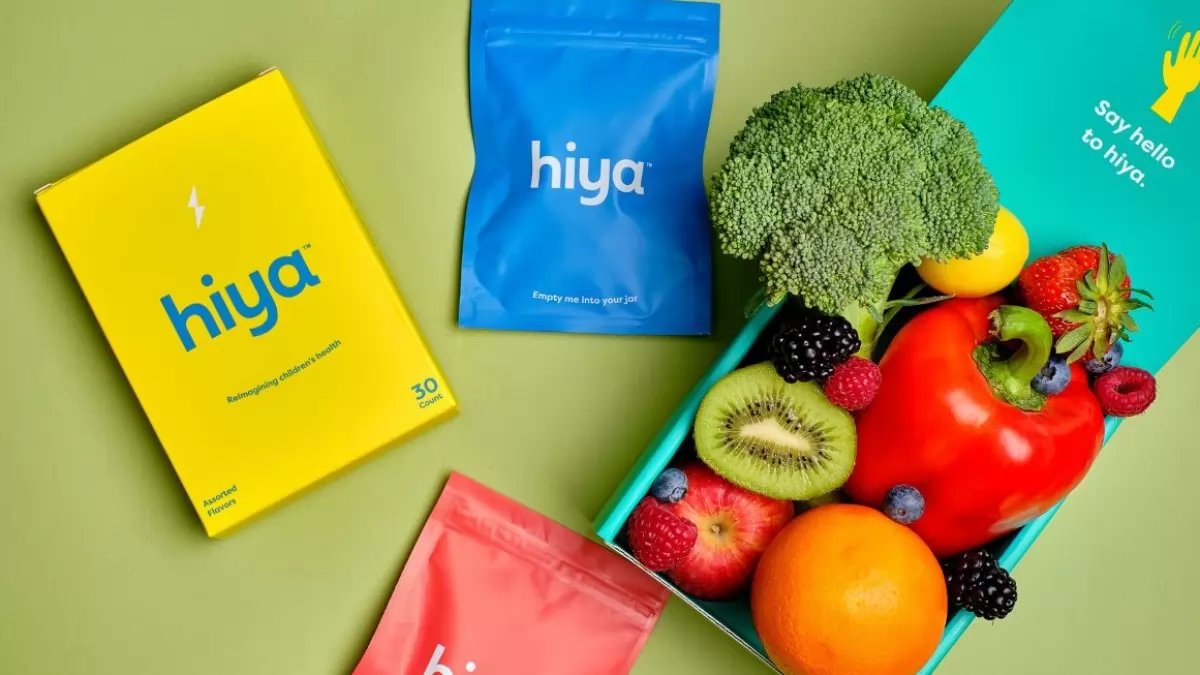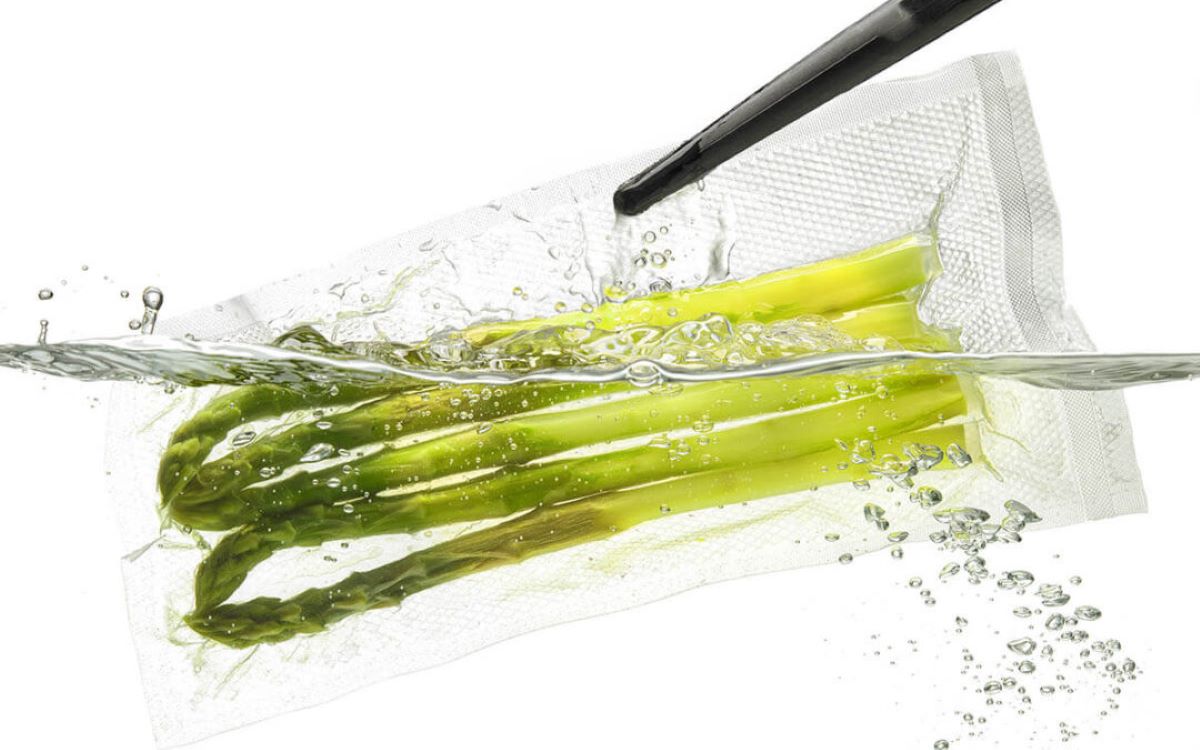Home>Gardening News and Trends>Latest News>What Vegetables Have Vitamin B


Latest News
What Vegetables Have Vitamin B
Modified: January 22, 2024
Discover the latest news on vegetables that are rich in Vitamin B. Find out which veggies you should incorporate into your diet for optimal nutrition.
(Many of the links in this article redirect to a specific reviewed product. Your purchase of these products through affiliate links helps to generate commission for Chicagolandgardening.com, at no extra cost. Learn more)
Table of Contents
Introduction
Vegetables are an essential part of a healthy and balanced diet. They are packed with various nutrients that contribute to our overall well-being. One important group of nutrients found in vegetables is vitamin B, which plays a crucial role in maintaining our body’s functions.
Vitamin B is a group of water-soluble vitamins that are involved in important physiological processes, including energy production, brain function, and cell metabolism. They are necessary for the proper functioning of the nervous system, promoting healthy red blood cells, and supporting the metabolism of fats, proteins, and carbohydrates.
Including vegetables that are rich in vitamin B in our daily diet is crucial to ensure we meet our nutritional needs. Not only do these vegetables provide us with essential nutrients, but they also add flavor, color, and texture to our meals. From leafy greens to cruciferous vegetables, there is a wide variety of vitamin B-rich vegetables to choose from.
In this article, we will explore some of the top vegetables that are excellent sources of vitamin B. Whether you’re a vegetarian, vegan, or simply looking to improve your nutrient intake, incorporating these veggies into your diet can help you meet your vitamin B needs and support overall health.
Importance of Vitamin B in Vegetables
Vitamin B plays a vital role in maintaining our overall health and well-being, and consuming vegetables rich in this group of nutrients is essential to ensure we meet our daily requirements. Here are some key reasons why vitamin B is important and why including vegetables in our diet is crucial:
- Energy Production: Vitamin B helps convert the food we eat into energy by playing a role in the metabolism of carbohydrates, proteins, and fats. This is particularly important for individuals leading an active lifestyle or those looking to boost their energy levels.
- Brain Function: Vitamin B is critical for proper brain function and development. It supports the synthesis of neurotransmitters, the chemical messengers that enable communication between brain cells. Consuming vegetables rich in B vitamins can help support cognitive function, memory, and mood.
- Nervous System Health: The B vitamins are essential for maintaining a healthy nervous system. They play a crucial role in the production of myelin, a protective coating that surrounds nerve fibers. Adequate intake of B vitamins through vegetables can help support nerve function and prevent conditions such as peripheral neuropathy.
- Healthy Skin: B vitamins contribute to maintaining healthy skin by supporting cell regeneration and promoting a youthful complexion. Vegetables rich in B vitamins can help nourish the skin from within and aid in the repair of damaged tissues.
- Red Blood Cell Formation: Vitamin B12 and folate are vital for the production of red blood cells in our body. These nutrients are necessary for preventing anemia and ensuring oxygen is efficiently transported throughout the body. Including vegetables rich in B vitamins can help support red blood cell formation.
With the numerous health benefits associated with vitamin B, it becomes evident how important it is to include vegetables in our diet to meet our nutritional needs. Not only do these vegetables supply us with vitamins and minerals, but they are also rich in fiber, antioxidants, and phytochemicals that contribute to overall health and disease prevention.
List of Vitamin B-rich Vegetables
Including a variety of vegetables in our diet is crucial to ensure we receive an adequate intake of vitamin B. Here is a list of vitamin B-rich vegetables that you can incorporate into your meals:
- Spinach: Spinach is a nutritional powerhouse and a top source of vitamin B9, also known as folate. It is also high in other B vitamins like vitamin B2 and vitamin B6. Add spinach to salads, stir-fries, or smoothies for a nutrient boost.
- Broccoli: Broccoli is not only rich in vitamin C and fiber, but it is also a good source of vitamin B6 and folate. Enjoy steamed or roasted broccoli as a side dish or add it to stir-fries and pasta dishes.
- Brussels Sprouts: Brussels sprouts are packed with vitamins and minerals, including vitamin B6 and folate. Roast them with olive oil and seasonings for a delicious and healthy side dish.
- Asparagus: Asparagus is a versatile vegetable that is loaded with nutrients, including vitamin B1, vitamin B2, vitamin B6, and folate. Grill or steam asparagus for a nutritious addition to any meal.
- Bell Peppers: Bell peppers are not only vibrant and flavorful, but they are also a great source of vitamin B6 and folate. Add them to salads, stir-fries, or stuff them with your favorite fillings for a nutritious meal.
- Green Peas: Green peas are a tasty legume that is rich in vitamin B1, vitamin B2, vitamin B3, and folate. Enjoy them steamed as a side dish or add them to soups, stews, and curries.
- Lima Beans: Lima beans are a nutrient-dense legume that provides a good amount of vitamin B6 and folate. Add them to salads, soups, or stews for a hearty and nutritious meal.
- Cauliflower: Cauliflower is a versatile vegetable that is rich in several B vitamins, including vitamin B5, vitamin B6, and folate. Enjoy it roasted, mashed, or as a low-carb alternative to rice or pizza crust.
- Kale: Kale is a nutrient powerhouse and a great source of multiple B vitamins, such as vitamin B1, vitamin B2, vitamin B3, and folate. Add kale to salads, smoothies, or sauté it as a side dish.
- Cabbage: Cabbage is a cruciferous vegetable that is rich in vitamin B6 and folate. Enjoy cabbage in salads, wraps, stir-fries, or make sauerkraut for a gut-healthy option.
Incorporating these vitamin B-rich vegetables into your diet can help ensure a sufficient intake of these essential nutrients. Experiment with different cooking methods and recipes to make your meals both nutritious and delicious.
Spinach
Spinach is a nutrient-dense leafy green vegetable that offers a wide array of health benefits. It is particularly known for its high content of vitamin B9, also known as folate. In addition to folate, spinach is also a good source of other B vitamins such as vitamin B2 and vitamin B6.
Folate, one of the B vitamins found in spinach, plays a crucial role in DNA synthesis and cell division. It is particularly important during periods of rapid growth and development, such as pregnancy. Adequate intake of folate is essential for the proper formation of the neural tube in unborn babies, which helps prevent neural tube defects.
In addition to its role in DNA synthesis, folate is involved in the production of red blood cells and the metabolism of amino acids. It helps support cardiovascular health by helping to control homocysteine levels, an amino acid that, when elevated, has been associated with an increased risk of heart disease.
Spinach is also a great source of vitamin B2, also known as riboflavin. This vitamin plays a crucial role in energy production, acting as a cofactor for various enzyme reactions involved in the metabolism of carbohydrates, proteins, and fats. It also acts as an antioxidant, helping protect cells from damage caused by free radicals.
Furthermore, spinach is a good source of vitamin B6, which is involved in over 100 enzymatic reactions in the body. It is essential for brain development and function, as well as the production of neurotransmitters such as serotonin and dopamine, which regulate mood, sleep, and appetite.
Incorporating spinach into your diet is easy as it can be enjoyed raw in salads, added to smoothies, or cooked in various dishes. Choose organic spinach when possible, and be sure to wash it thoroughly before consuming to remove any dirt or residue.
To maximize the nutritional benefits of spinach, consider pairing it with foods rich in vitamin C, as it helps enhance the absorption of iron present in spinach. Adding lemon juice or chopped bell peppers to a spinach salad or sautéing spinach with diced tomatoes are simple ways to boost the nutrient absorption of this leafy green vegetable.
Summary:
Spinach is a nutrient-dense vegetable packed with vitamin B9 (folate), vitamin B2 (riboflavin), and vitamin B6. It supports DNA synthesis, cell division, cardiovascular health, energy production, and brain function. Incorporate raw or cooked spinach into your meals to enjoy its numerous health benefits.
Broccoli
Broccoli is a versatile and nutrient-packed vegetable that provides numerous health benefits. It is not only rich in fiber and vitamin C but also contains several B vitamins, including vitamin B6 and folate.
Vitamin B6, found in broccoli, plays a crucial role in many bodily functions. It is involved in amino acid metabolism, neurotransmitter synthesis, and the production of hemoglobin, the protein responsible for carrying oxygen in the blood. Furthermore, vitamin B6 supports the immune system and helps maintain proper brain function.
Folate, another B vitamin present in broccoli, is essential for DNA synthesis and cell growth. It is especially important during pregnancy to support fetal development and prevent neural tube defects. Folate also helps regulate homocysteine levels and supports cardiovascular health.
Beyond its vitamin B content, broccoli is also rich in antioxidants, such as sulforaphane and glucosinolates. These antioxidants help protect the body against oxidative stress, reduce inflammation, and support detoxification processes.
Incorporating broccoli into your diet is easy and can be done in various ways. You can steam or roast broccoli as a side dish, add it to stir-fries, soups, or salads, or even enjoy it raw as part of a vegetable platter. To maximize its nutritional benefits, avoid overcooking broccoli, as this can deplete its vitamin content.
Pairing broccoli with foods high in vitamin C can also enhance the absorption of iron present in broccoli. Consider adding lemon juice or tomatoes to your broccoli dishes to further boost nutrient absorption.
Summary:
Broccoli is a versatile and nutrient-rich vegetable containing vitamin B6 and folate. Its high antioxidant content contributes to its numerous health benefits. Include broccoli in your meals by steaming, roasting, or adding it to various dishes, and pair it with vitamin C-rich foods for optimal nutrient absorption.
Brussels Sprouts
Brussels sprouts may be small in size, but they are packed with nutrients, including several B vitamins. These miniature cabbages offer a range of health benefits and are a delicious addition to any meal.
One of the B vitamins found in Brussels sprouts is vitamin B6. Vitamin B6 plays a crucial role in the body’s metabolism, helping convert the food we eat into energy. It also supports brain health and the production of neurotransmitters like serotonin and dopamine, which are essential for regulating mood and sleep.
Brussels sprouts are also a good source of folate, another B vitamin that is important for the synthesis of DNA and cell division. Folate is particularly vital during periods of rapid growth, such as pregnancy, as it helps prevent neural tube defects in unborn babies. Additionally, folate aids in the production of red blood cells and supports cardiovascular health by regulating homocysteine levels.
What sets Brussels sprouts apart from other vegetables is their high content of sulfur-containing compounds called glucosinolates. These compounds have been linked to cancer prevention due to their potential anti-cancer properties. Glucosinolates are also responsible for the distinct odor and taste associated with Brussels sprouts.
To enjoy Brussels sprouts, you can roast them to bring out their natural sweetness or steam them for a tender and slightly crunchy texture. Adding some olive oil and seasonings like garlic, salt, and pepper can enhance their flavor. Brussels sprouts can be used in salads, stir-fries, or as a side dish to accompany various main courses.
Remember, overcooking Brussels sprouts can cause them to become mushy and lose their nutritional value. To preserve their nutrients and maintain their crunchiness, cook them until they are bright green and tender-crisp.
Summary:
Brussels sprouts are a nutrient-rich vegetable that contains vitamin B6 and folate. They are also rich in glucosinolates, which contribute to their cancer-fighting properties. Enjoy Brussels sprouts by roasting or steaming them and incorporate them into salads, stir-fries, or as a side dish to diversify your meals and gain their numerous health benefits.
Asparagus
Asparagus is a versatile and nutritious vegetable that is rich in various B vitamins. It not only adds a unique flavor and texture to dishes but also provides numerous health benefits.
One of the B vitamins found in asparagus is vitamin B1, also known as thiamine. Thiamine plays a vital role in converting carbohydrates into energy and maintaining proper nerve and muscle function. It also supports cardiovascular health and helps maintain a healthy metabolism.
Another B vitamin present in asparagus is vitamin B2, also called riboflavin. Riboflavin is involved in energy production, acting as a cofactor for multiple enzyme reactions in the body. It supports the growth and repair of tissues, promotes healthy skin, and contributes to optimal vision health.
Asparagus is also a good source of vitamin B6, pyridoxine, which is essential for brain development and function. It aids in the synthesis of neurotransmitters like serotonin and dopamine, which regulate mood, sleep, and appetite. Additionally, vitamin B6 is involved in the production of red blood cells and supports the immune system.
Incorporating asparagus into your diet is simple and allows for a variety of culinary options. You can grill, steam, roast, or sauté asparagus for a delicious side dish. Asparagus also works well in salads, stir-fries, omelets, or pasta dishes.
To maximize the nutritional benefits of asparagus, it’s essential to cook it properly. Overcooking can lead to a mushy texture and nutrient loss. Cook asparagus until it is tender-crisp, vibrant green, and still slightly firm to the bite.
Summary:
Asparagus is a versatile vegetable that contains various B vitamins, including vitamin B1 (thiamine), vitamin B2 (riboflavin), and vitamin B6 (pyridoxine). These vitamins support energy production, nerve function, tissue growth and repair, and brain health. Enjoy asparagus in a variety of dishes, from side dishes to salads and stir-fries, to reap its numerous health benefits.
Bell Peppers
Bell peppers are not only vibrant and flavorful, but they are also a great source of several B vitamins. These colorful vegetables offer a range of health benefits, making them an excellent addition to any diet.
One of the B vitamins found in bell peppers is vitamin B6, which is essential for brain health and function. Vitamin B6 plays a crucial role in the production of neurotransmitters that regulate mood, sleep, and appetite. It also supports the synthesis of hemoglobin and helps maintain a healthy immune system.
Bell peppers are also a good source of folate, another important B vitamin. Folate plays a key role in DNA synthesis and cell division, making it particularly important during periods of rapid growth, such as pregnancy. Adequate folate intake is essential for the proper development of the neural tube in unborn babies and can help prevent birth defects.
Additionally, bell peppers contain vitamin B2, also known as riboflavin. Vitamin B2 is involved in energy production and acts as an antioxidant, protecting cells from damage caused by free radicals. It also supports the health of the skin, eyes, and nervous system.
Bell peppers can be enjoyed in various dishes, both raw and cooked. They add a delightful crunch and vibrant color to salads, stir-fries, wraps, and sandwiches. Roasting or grilling bell peppers brings out their natural sweetness and enhances their flavor. They are also an excellent addition to stuffed pepper recipes or can be sautéed as a side dish.
To fully reap the benefits of bell peppers, choose peppers of different colors, such as red, yellow, and green. Each color offers its own unique set of nutrients and antioxidants. Including a variety of colors ensures you obtain the maximum nutritional value from these versatile vegetables.
Summary:
Bell peppers are a colorful and nutritious vegetable that provides several B vitamins, including vitamin B6 and folate. These vitamins support brain health, DNA synthesis, energy production, and the immune system. Incorporate bell peppers into your meals, both raw and cooked, to enjoy their vibrant flavor and numerous health benefits.
Green Peas
Green peas are a delicious and versatile vegetable that is not only tasty but also packed with various B vitamins. They provide many health benefits and are a valuable addition to any balanced diet.
One of the B vitamins found in green peas is vitamin B1, also known as thiamine. Thiamine plays a crucial role in energy metabolism, helping convert carbohydrates into usable energy for the body. It also supports nerve function and brain health.
Green peas are also a good source of vitamin B2, also called riboflavin. Riboflavin is involved in vital metabolic processes, including the production of energy and the metabolism of fat, protein, and carbohydrates. It also supports healthy skin, eyes, and nervous system function.
Another B vitamin found in green peas is vitamin B3, also known as niacin. Niacin plays a crucial role in energy production and cellular repair. It also supports digestive health and helps maintain healthy cholesterol levels.
In addition to these B vitamins, green peas are rich in dietary fiber, antioxidants, and other essential nutrients. They contribute to digestive health, help regulate blood sugar levels, and support overall heart health.
Enjoy green peas as a versatile ingredient in a variety of dishes. Add them to salads, soups, stews, or stir-fries, or simply enjoy them as a side dish. You can also use them to make delicious dips, spreads, or incorporate them into pasta and rice dishes.
To preserve the nutritional value of green peas, it’s best to cook them lightly. Steaming or blanching for a few minutes will help retain their vibrant color, texture, and essential nutrients.
Summary:
Green peas are a versatile and nutrient-dense vegetable that provides several B vitamins, including vitamin B1, vitamin B2, and vitamin B3. These vitamins support energy production, nerve function, and overall health. Incorporate green peas into your meals and enjoy their numerous health benefits as part of a balanced diet.
Lima Beans
Lima beans, also known as butter beans, are a type of legume that is rich in various B vitamins. These creamy and delicious beans offer numerous health benefits and are a great addition to a balanced diet.
One of the B vitamins found in lima beans is vitamin B6, which plays a crucial role in brain development and function. Vitamin B6 is involved in the production of neurotransmitters, such as serotonin and dopamine, which regulate mood, sleep, and appetite. It also supports the immune system and aids in the formation of red blood cells.
Lima beans are also a good source of folate, another important B vitamin. Folate is essential for DNA synthesis and cell division, making it particularly important during periods of rapid growth, such as pregnancy. Adequate folate intake is crucial for the proper development of the neural tube in unborn babies and can help prevent birth defects.
Additionally, lima beans contain vitamin B3, also known as niacin, which is involved in energy production and cellular repair. Niacin also supports digestive health and helps maintain healthy cholesterol levels.
Lima beans are versatile and can be used in a variety of dishes. They can be enjoyed in soups, stews, salads, and casseroles. They can also be pureed and used as a spread or added to dips. Lima beans pair well with various herbs, spices, and vegetables, allowing you to create flavorful and nutritious meals.
To prepare lima beans, first, ensure that they are properly soaked before cooking. This helps reduce cooking time and enhances their texture. Lima beans can be boiled, steamed, or cooked in a pressure cooker until they are tender. Remember to season them with salt and spices to enhance their taste.
Summary:
Lima beans are a nutrient-rich legume that provides several B vitamins, including vitamin B6 and folate. These vitamins support brain health, DNA synthesis, and immune function. Incorporate lima beans into your meals for a creamy and delicious addition that offers numerous health benefits.
Cauliflower
Cauliflower is a versatile and nutrient-rich vegetable that offers numerous health benefits. It is not only low in calories but also contains several B vitamins that are essential for overall well-being.
One of the B vitamins present in cauliflower is vitamin B5, also known as pantothenic acid. Vitamin B5 plays a crucial role in the metabolism of carbohydrates, proteins, and fats. It is involved in the production of energy and helps support healthy skin, hair, and nails.
Cauliflower also contains vitamin B6, which is essential for brain health and function. Vitamin B6 plays a role in supporting mood, sleep, and cognitive function. It is involved in the synthesis of neurotransmitters such as serotonin and dopamine, which regulate mood, appetite, and sleep patterns.
In addition to vitamin B5 and vitamin B6, cauliflower is a good source of folate. Folate is important for DNA synthesis and cell division. Adequate intake of folate is particularly crucial during pregnancy, as it helps prevent neural tube defects in unborn babies. Folate also supports cardiovascular health by regulating homocysteine levels.
Cauliflower is a versatile vegetable that can be used in various dishes. It can be roasted, steamed, mashed, or even made into cauliflower rice or cauliflower pizza crust. It absorbs flavors well and can be seasoned with a variety of herbs and spices to suit your taste preferences.
To preserve the nutrients in cauliflower during cooking, it is recommended to lightly steam or sauté it. This helps retain its crisp texture and nutritional value. Overcooking cauliflower may result in nutrient loss and a mushy consistency.
Summary:
Cauliflower is a nutrient-rich vegetable that contains several B vitamins, including vitamin B5, vitamin B6, and folate. These vitamins support energy production, brain health, and DNA synthesis. Enjoy cauliflower in various dishes and preparations to benefit from its versatility and numerous health benefits.
Kale
Kale is a leafy green vegetable that has gained immense popularity due to its impressive nutrient profile. It is rich in various B vitamins, making it a nutritional powerhouse that offers numerous health benefits.
One of the B vitamins found in kale is vitamin B1, also known as thiamine. Thiamine is essential for converting carbohydrates into energy and supporting proper nerve function. It also plays a role in maintaining a healthy metabolism and promoting overall vitality.
Kale is also a good source of vitamin B2, or riboflavin, which is involved in energy production and the metabolism of fats, proteins, and carbohydrates. Riboflavin acts as an antioxidant, protecting cells from damage, and contributes to healthy skin, eyes, and nervous system function.
Additionally, kale provides a significant amount of vitamin B3, or niacin. Niacin plays a vital role in energy production and cellular repair. It supports digestive health and helps maintain optimal cholesterol levels.
Kale is a versatile vegetable that can be enjoyed in various dishes. It can be used as a base for salads, sautéed as a side dish, or blended into smoothies for a nutritious boost. It is important to note that the nutritional value of kale is best preserved when it is cooked lightly or consumed raw.
To prepare kale, remove the tough center stalk and chop the leaves into smaller pieces. You can massage the leaves with olive oil and a pinch of salt to soften them for salads or lightly steam them for a vibrant and nutritious side dish. Kale pairs well with other vegetables, grains, and proteins, making it a versatile ingredient in many recipes.
Summary:
Kale is a nutrient-dense vegetable that contains several B vitamins, including vitamin B1, vitamin B2, and vitamin B3. These vitamins support energy production, cellular repair, and overall bodily functions. Incorporate kale into your diet by enjoying it in salads, sautés, or smoothies to benefit from its impressive nutritional profile.
Cabbage
Cabbage is a cruciferous vegetable that comes in various varieties, such as green cabbage, red cabbage, and Savoy cabbage. It is not only versatile and delicious, but it is also a great source of several B vitamins, making it a nutritious addition to any meal.
One of the B vitamins found in cabbage is vitamin B6, which plays a vital role in brain health and cognitive function. Vitamin B6 is involved in the production of neurotransmitters, such as serotonin and dopamine, which regulate mood, sleep, and appetite. It also supports the immune system and aids in the formation of red blood cells.
Cabbage is also a good source of folate, another essential B vitamin. Folate is important for DNA synthesis and cell division, particularly during periods of rapid growth, such as pregnancy. Adequate intake of folate is crucial for the proper development of the neural tube in unborn babies and can help prevent birth defects. Folate also supports cardiovascular health.
In addition to vitamin B6 and folate, cabbage contains vitamin B5, or pantothenic acid. Vitamin B5 plays a crucial role in the metabolism of carbohydrates, proteins, and fats. It is involved in energy production and plays a part in maintaining healthy skin, hair, and nails.
Cabbage can be enjoyed in various ways, both raw and cooked. It can be sliced and added to salads for a refreshing crunch, or it can be cooked in stir-fries, soups, or stews for a comforting and nutritious meal. Fermented cabbage, such as sauerkraut or kimchi, offers probiotics that promote gut health.
To prepare cabbage, remove the outer leaves and rinse it thoroughly. You can either chop it into shreds or leave it in larger wedges, depending on your preference and the recipe you are following. Cabbage can be cooked until tender or left slightly crisp for added texture.
Summary:
Cabbage is a versatile cruciferous vegetable that provides several B vitamins, including vitamin B6, folate, and vitamin B5. These vitamins support brain health, DNA synthesis, energy production, and overall vitality. Include cabbage in your meals, whether raw or cooked, to enjoy its numerous health benefits and delicious flavor.
Conclusion
Incorporating vitamin B-rich vegetables into our diet is essential for maintaining optimal health and well-being. These vegetables provide us with a wide range of B vitamins, including thiamine (B1), riboflavin (B2), niacin (B3), vitamin B6, vitamin B9 (folate), and vitamin B5. Each of these B vitamins plays a vital role in our body’s functions, from energy metabolism to brain health, cell division, and immune support.
From leafy greens like spinach and kale to cruciferous vegetables like broccoli and Brussels sprouts, and even legumes like green peas and lima beans, there is a diverse array of vitamin B-rich vegetables to choose from. Incorporating these vegetables into our meals not only provides us with essential nutrients but also adds flavor, texture, and vibrant colors to our plates.
To maximize the nutritional benefits of these vegetables, it is important to prepare and cook them properly. Lightly steaming or sautéing vegetables helps retain their nutrients and texture, while overcooking can result in nutrient loss. Pairing these vegetables with foods high in vitamin C can also enhance the absorption of iron and other nutrients found in them.
Whether you’re a vegetarian, vegan, or simply looking to improve your nutrient intake, incorporating vitamin B-rich vegetables into your diet is a smart choice. These vegetables offer a multitude of health benefits, including supporting energy production, brain function, nervous system health, and skin health. By including them in your meals, you can enjoy the flavorful and nutritious goodness of these vitamin-rich vegetables while enhancing your overall health and well-being.
So, let’s make a conscious effort to add more vitamin B-rich vegetables to our plates and enjoy the numerous health benefits they have to offer. Your body and taste buds will thank you for it!


